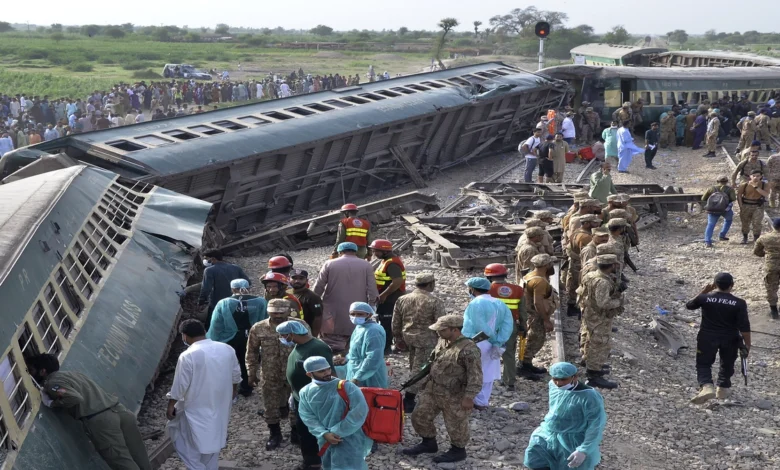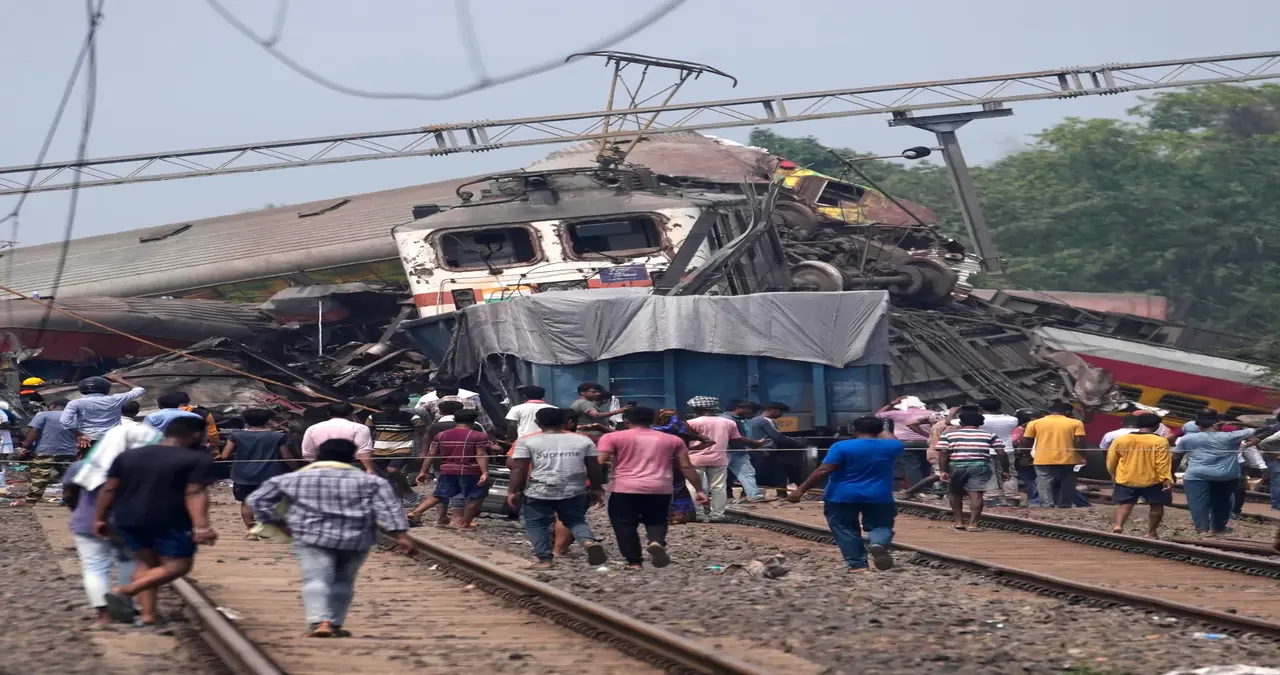Train Derailed Today: What You Need to Know1

Train Derailed Today: What You Need to Know When a train derails, it causes widespread disruption, and potential injury, and raises several questions about safety, infrastructure, and how we prevent such incidents. With the news of a train derailed today, it’s natural to wonder about the causes, consequences, and what’s being done to minimize these incidents in the future. In this article, we will explore all of these aspects in detail. Whether you’re concerned about safety or just want to understand the broader impact of such events, this article aims to provide clear and insightful answers.
The Train Derailed Today: What Happened?
A train derailment is always a significant event, especially when it happens in a populated or crucial transport area. Today’s incident adds to a long history of such events, and the ramifications extend far beyond just the immediate damage. When a train derailed today, the focus was not only on the safety of the passengers and crew but also on the wider public’s concerns. These types of accidents, although rare compared to the sheer number of train journeys taken daily, still hold an alarming level of impact.
Details of the Incident
Reports emerging from the scene suggest that the train involved was part of a routine service, traveling through a region known for its stable railway conditions. However, something went wrong during this journey, leading to the derailment. Initial investigations point to several potential causes: track damage, mechanical failure, or even human error. It’s important to note that train derailments can happen for a wide variety of reasons, each of which can contribute to the severity of the situation.
Emergency responders were quickly on-site, and efforts to assist injured passengers and contain any damage are underway. The derailment of a train is often not just about the immediate aftermath but also about long-term effects, such as service disruptions, environmental hazards, and the public’s perception of safety within the rail system. While officials are working to clear the tracks, the incident has sparked conversations about the broader need for maintenance and more stringent safety protocols.
What Causes a Train to Derail?
While the immediate aftermath of the train derailed today incident is on everyone’s mind, understanding the causes behind these events can help prevent them in the future. Train derailments are complex events that typically result from a combination of factors. It’s never a single cause, but rather a chain of events that might start with something small and escalate into something larger. Here are some common reasons why trains derail:
Track Issues
The integrity of railway tracks is crucial to the safety of trains. Over time, tracks can experience wear and tear, especially in areas with high traffic volumes. Even small issues, like misaligned rails or cracks in the track, can cause a train to derail. Regular inspection and maintenance are critical in ensuring that tracks remain in optimal condition. Unfortunately, if these checks aren’t carried out properly, incidents like today’s derailment can occur.
In addition to physical track issues, external factors such as severe weather conditions can also play a role in track degradation. Floods, heavy rains, or snow can weaken track stability, contributing to derailments. The incident we’re discussing today may very well be linked to these kinds of external environmental factors.
Mechanical Failures
Another significant cause of derailments is mechanical failure. Trains rely on intricate systems of engines, wheels, brakes, and suspension systems to maintain a smooth, controlled ride. A malfunction in any of these systems can lead to a derailment. Even something as seemingly minor as a malfunctioning wheel can cause the entire train to lose balance and tip off the tracks.
In some cases, the issue may involve the train’s braking system. If the train’s brakes fail to engage properly, it could result in the train being unable to slow down, increasing the likelihood of a derailment when it’s necessary to navigate tight curves or heavy slopes. Though modern trains are equipped with advanced technology designed to prevent such failures, mechanical problems still happen from time to time.
How Does a Train Derailment Impact Public Safety?
The consequences of a train derailed today go far beyond the physical damage caused. Public safety is a major concern in such situations, as the potential for injury or even death is always present in a derailment scenario. It’s also important to understand the ripple effects that these incidents have on the communities involved.
Direct Impact on Passengers and Crew
In the immediate aftermath of a train derailment, the most pressing concern is the safety of the passengers and crew members on board. Trains are designed to be robust and durable, but a derailment often subjects passengers to violent jolts and impacts that can result in serious injury. In some tragic cases, the injuries are fatal. The fact that today’s derailment involved multiple cars leaving the tracks raises concerns about how much damage the passengers endured.
The crew also faces significant risks. Train operators and conductors may be thrown from their seats or trapped in the wreckage. Emergency services often have to work quickly to rescue them. Fortunately, modern emergency protocols and technology, such as on-board communication systems, can help mitigate these risks and ensure that help is on the way as soon as possible.
Impact on the Surrounding Environment
Aside from human safety, the derailment also affects the surrounding environment. Many trains carry hazardous materials like chemicals or fuel, and if these are released during a derailment, they can pose a significant environmental hazard. Even if the train wasn’t carrying hazardous materials, the accident still disrupted the surrounding infrastructure.
In the case of today’s derailment, there are concerns about possible environmental contamination. Local authorities and environmental agencies often perform immediate assessments to ensure that the surrounding ecosystem, including water sources, remains safe from any toxic exposure. The cleanup process can be lengthy and costly, requiring significant resources to prevent lasting damage.
The Aftermath: Recovery and Investigation
Once the immediate crisis has been addressed, the recovery process begins. This includes both the physical recovery of the train and the investigation into what caused the derailment in the first place.
Investigation into Causes
Investigators will carefully analyze all the factors that could have contributed to the derailment. This includes checking the tracks for damage, inspecting the Train Derailed Today for mechanical failures, and reviewing any human error factors that may have been involved. In the case of today’s derailment, the investigation will likely be thorough, as it could provide crucial insights into how future derailments can be prevented.
This investigation is vital not just for accountability but for improving overall safety standards across the rail network. The insights gained from these investigations often lead to new safety measures, regulations, and upgrades to train systems that help avoid similar incidents in the future.

Recovery Efforts and Clearing the Tracks
While investigations are ongoing, clearing the wreckage and restoring the train service is a top priority. Train companies work tirelessly with emergency crews and recovery teams to remove debris and ensure that the tracks are safe to use again. This process can take hours or even days, depending on the severity of the derailment.
Restoring normalcy to the area is not just about getting the trains back on track, but also about ensuring that passengers who were affected by the disruption can complete their journeys. Alternative transport services like buses or taxis may be provided to help people reach their destinations.
Preventing Future Train Derailments
As with any major transportation incident, the ultimate goal is to reduce the likelihood of similar events in the future. Railway companies, governments, and safety organizations continually work together to make trains safer for everyone. Today’s derailment serves as a reminder of the importance of these efforts.
Advances in Train Technology
Technological advances are playing a key role in reducing the chances of train derailments. From better track monitoring systems to more advanced sensors on trains themselves, the focus is on creating a more resilient transport system. For example, many modern trains are equipped with systems that can detect potential mechanical issues before they become critical.
Additionally, technologies like Automatic Train Control (ATC) and Positive Train Control (PTC) have been developed to help prevent human error by automatically stopping a train if it detects unsafe conditions. These systems are being slowly rolled out across many train networks worldwide, helping to reduce the risks associated with train travel.
Better Track Maintenance and Monitoring
One of the most critical aspects of preventing derailments is ensuring that railway tracks are well-maintained and inspected regularly. Investment in track infrastructure is essential to ensuring the safety of passengers and reducing the risk of accidents. The implementation of more advanced track monitoring systems, such as high-tech sensors that can detect cracks or weaknesses, is helping railway operators stay ahead of potential issues.
This framework provides an in-depth look at the train derailed today’s situation and its many facets. If you need further sections or additional focus on specific areas, feel free to let me know!



